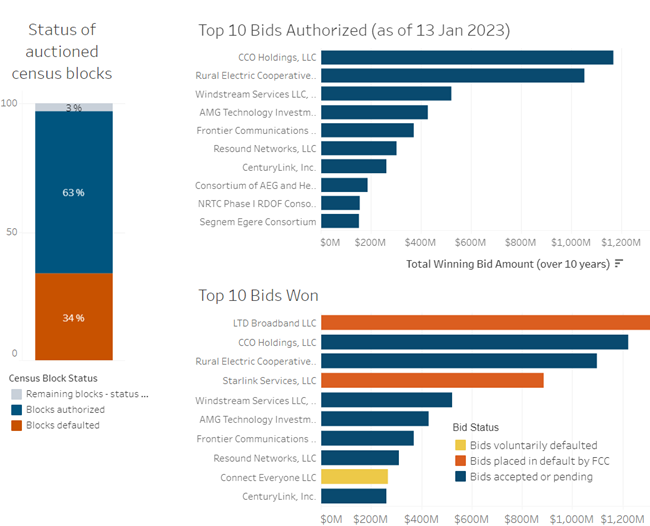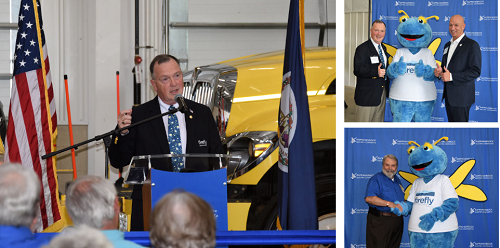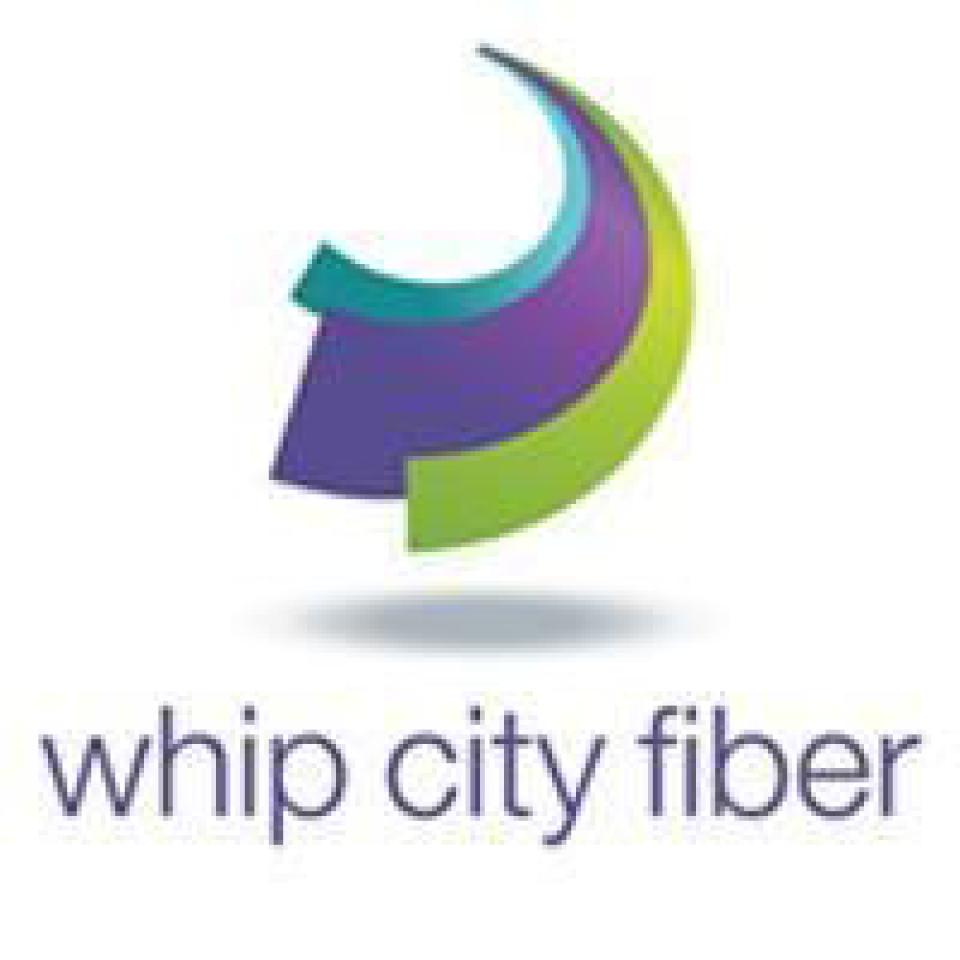
Fast, affordable Internet access for all.

The Rural Digital Opportunity Fund (RDOF) was supposed to drive affordable fiber into vast swaths of long-underserved parts of rural America. And while the FCC administered program accomplished some of that goal, a multitude of problems have plagued the program since its inception, putting both current and future broadband funding opportunities at risk.
The $20.4 billion RDOF program was created in 2019 by the Trump FCC as a way to shore up affordable broadband access in traditionally unserved rural U.S. markets.
The money was to be doled out via reverse auction in several phases, with winners chosen based on having the maximum impact for minimum projected cost.
During phase one of the program, the FCC stated that 180 bidders won $9.2 billion over 10 years to provide broadband to 5.2 million locations across 49 states and the Commonwealth of the Northern Mariana Islands.
But, according to ILSR data, roughly 34 percent of census blocks that won RDOF funding–more than $3 billion in awards – are now in default. All told, 287,322 census blocks were defaulted on by more than 121 providers as of December 2023.

The defaults are only one part of a larger problem: namely that many communities bogged down in RDOF program dysfunction may risk losing out on the historic amount of federal funding to build modern broadband networks (BEAD) made possible by the 2021 bipartisan infrastructure law.
One Big Giant Mess
Five years ago, the Central Virginia Electric Cooperative (CVEC) announced the creation of the Firefly Broadband initiative, a subsidiary specifically built to leverage the co-op’s existing electrical assets to deliver affordable fiber to 13 underserved Virginia counties.
Half a decade later, the coop says it has successfully completed its $150 million expansion project, deployed 3,600 miles of new fiber, passed 40,000 total homes and businesses, and directly connected 20,000 state residents–many for the first time ever–in less than 52 months.
“Central Virginia Electric Cooperative partnered with Conexon to perform a feasibility study for a fiber build across their entire service territory – 13 counties and 3600 miles,” CVEC VP of Communications Melissa Gay told ILSR. “Once the target costs, offerings and take rates were determined, we chose to race to secure supplies and labor. Finding great partners has been a tremendous help to the success of our project.”

Buoyed by numerous grants including a $28 million combination loan and grant from the USDA's ReConnect Program, Firefly now provides local residents symmetrical 100 Mbps (megabits per second) fiber for $50 a month, and symmetrical 1 Gbps (gigabit per second) service for $80 a month. There are no contracts and no data caps.
About 90 percent of households connected had no broadband access previously, according to Bruce Maurhoff, Firefly’s senior vice president and chief operating officer.

May 2022 witnessed something remarkable: the birth of a new nonprofit advocacy organization whose sole purpose was to speak up for the hundreds of communities that have built municipal broadband networks, and the thousands more that want to but don't know where to start. Now, the American Association for Public Broadband has named as its Executive Director as Gigi Sohn, former Biden nominee to the Federal Communications Commission. And she's ready to get to work.
Gigi joins Christopher on the podcast this week to talk about standing up support systems to promote and defend community-driven models to double the number of municipal systems in the next five years - including providing resources and countering dark-money astroturf campaigns - while also making sure the Internet stays as open and equitable as possible, and not squandering the promise of BEAD.
This show is 46 minutes long and can be played on this page or via Apple Podcasts or the tool of your choice using this feed.
Transcript below.
We want your feedback and suggestions for the show-please e-mail us or leave a comment below.
Listen to other episodes here or view all episodes in our index. See other podcasts from the Institute for Local Self-Reliance here.
Thanks to Arne Huseby for the music. The song is Warm Duck Shuffle and is licensed under a Creative Commons Attribution (3.0) license.
What Becket Town Administrator William Caldwell called “one of the most anticipated news [events]” in town was announced at the North Becket Village fire station weeks before Christmas.
But town officials weren’t there to roll out a shiny new ladder truck or to bring their kids to meet Santa. They were there to bring glad tidings of the launch of construction for Becket Broadband, a municipal Fiber-To-The-Home (FTTH) network that will usher high-speed Internet connectivity into this small Massachusetts hill town.
Since the town received a $3 million state grant to fund the initial work to build the network nearly four years ago, Sertex construction crews have been working and will continue through the winter to string fiber cables on utility poles along the town’s approximately 100 miles of roads with the build-out expected to be complete in 2022.
The project manager for the network’s construction is Westfield Gas & Electric, the city of Westfield’s gas and electric utility which received $10.2 million from the Federal Communications Commission’s (FCC) Connect America Fund Phase II (CAF II) auction to expand fiber networks in 20 nearby communities in western Massachusetts, including Becket.
The failure of policy and leadership at the federal level in addressing the digital divide was ever more clearly exposed as Covid-19 restrictions were put into place last spring. And, as the pandemic continues to rage, daunting connectivity challenges remain.
Yes, the Connect America Fund (CAF) II program has doled out over $11 billion since 2015 in subsidies to the big telcos like AT&T, CenturyLink, Frontier, Windstream, and Consolidated ostensibly to upgrade rural broadband to speeds of at least 10/1 Megabits per second (Mbps). But, as Doug Dawson, president of CCG Consulting notes, it’s been a massive subsidy failure given that “even in 2015, it was ludicrous to spend money to build 10/1 Mbps broadband” – the same year the FCC defined broadband as 25/3 Mbps, which means “the FCC was investing in new Internet infrastructure in 2015 that didn’t qualify as broadband at the time of the award of funding.”
And there is reason to doubt that those subsidized upgrades were even completed, even as the FCC just extended the CAF II program for a seventh year.
So as states — and in many instances, local municipalities — step into the breach, the National Governors Association has released a new report that outlines a list of strategies governors can use to increase broadband access in underserved communities.
Published just before Thanksgiving, the report first lays out the challenge:
According to the FCC, in 2018, at least 18.3 million people lacked access to fixed broadband in the United States that meets minimum [I]nternet access speed of 25/3. 1 Of those 18.3 million people, representing 6 percent of the total population, 14 million live in rural areas and 1 million live on Tribal lands, which amounts to 22 percent and 28 percent of those respective geographic populations [even as] studies have claimed that the FCC data is undercounting the number of people in the U.S. without fixed broadband access, and that the total may be as high as 42 million people.
When Craig Eccher, CEO Tri-County Rural Electric Cooperative, joined Christopher on the podcast last fall, he had an exciting project to talk about: the electric cooperative, after strong calls from its membership asking their utility to deliver broadband, stepped up and committed to an $80 million, 3,250-mile fiber build across the rugged terrain of rural Pennsylvania, the first leg propelled by $52.6 million in federal and state grants. Tri-Co Connections, the subsidiary building the network and serving as provider, has begun connecting residents in an aggressive plan to serve 10,000 users in the next three years. The move makes Tri-County the first electric co-op in Pennsylvania to enter the fiber space, and it's doing so in dramatic fashion.
More Humble Beginnings
Westfield Gas+Electric (WG+E) started its broadband division WhipCity Fiber and the buildout of their network five years ago. The project started with only serving Westfield, but WG+E is now contracting with other small towns in Massachusetts to assist in building and potentially operating their own fiber networks.
Today, WG+E is slated to help connect 12,400 households in 20 Massachusetts towns over the next 10 years. In order to do this, WG+E and WhipCity Fiber will receive more than $10 million over the next ten years through the Federal Communication Commission’s Connect America Fund Phase II auction, which awarded $1.5 billion in subsidies to broadband providers to expand rural connectivity across the nation. The 20 towns that are partnering with WG+E to build fiber networks are: Alford, Ashfield, Blandford, Becket, Charlemont, Chesterfield, Colrain, Cummington, Goshen, Heath, Leyden, New Ashford, New Salem, Otis, Plainfield, Rowe, Shutesbury, Washington, Wendell, and Windsor.
Adapting While Expanding
Westfield has been slowly building out its network, which is owned and operated by WG+E, and it is now roughly 75 percent complete. Lisa Stowe, the communications manager at WG+E, said that they temporarily paused new installations in Westfield due to the Covid-19 pandemic. However, she is hopeful that they will begin connecting new customers and resume their buildout of the network this year.

To construct the WhipCity Fiber network, Westfield issued a $15 million bond. The city must pay down that bond and do routine updates to the network as they continue expanding. Stowe explained that they are well on track to having the network fully constructed within their original six year timeline.
Last week, Frontier Communications told the Federal Communications Commission (FCC) that there are 17,000 census blocks in which it is now offering 25 Megabits per second (Mbps) download and 3 Mbps upload. This means well over 400,000 Americans now live in areas no longer eligible for the FCC's Rural Digital Opportunity Fund, a $20.4 billion program to expand rural broadband. The first phase will auction off up to $16 billion in subsidies later this year.
In the filing, the company also identified census blocks where it believes other providers will deploy broadband access through state-funded programs, making those locations ineligible for the federal funds as well.
Frontier is Flailing

For this episode, Christopher was joined by returning guest Jonathan Chambers to discuss the Federal Communications Commission's (FCC's) Rural Digital Opportunity Fund (RDOF), which will finance broadband deployment across rural America. Jonathan is a partner at Conexon, which works with rural electric cooperatives to plan, fund, and build fiber optic networks.
The pair review the details of the new RDOF program and how the reverse auction compares to the prior Connect America Fund. Jonathan explains how the funding process rewards the local co-ops, communities, and companies that step up to provide high-quality connectivity. He argues that the FCC should move the auction timeline up to quickly expand Internet access because of the pandemic. They also talk about some issues with RDOF and about the potential for the program to improve broadband access in rural areas.
Previously, Jonathan was on Episode 349 and Episode 321 of the Community Broadband Bits podcast to discuss the Connect America Fund.
We'd also like to hear from you. Would you like to hear shorter, more frequent episodes instead of our usual weekly episodes to keep up with the ever-changing times? Let us know by commenting below, by sending an email to podcast@muninetworks.org, or by tagging us on social media.
This show is 39 minutes long and can be played on this page or via Apple Podcasts or the tool of your choice using this feed.
Transcript below.
We want your feedback and suggestions for the show-please e-mail us or leave a comment below.
Listen to other episodes here or view all episodes in our index. See other podcasts from the Institute for Local Self-Reliance here.
Thanks to Arne Huseby for the music. The song is Warm Duck Shuffle and is licensed under a Creative Commons Attribution (3.0) license.
This month, both Frontier Communications and CenturyLink put the FCC on notice that neither company expected to meet deployment milestones related to Connect America Fund Phase II (CAF II). In total, rural households in 23 states will have to wait for connectivity that the two large companies were tasked with developing using federal subsidies.
Not-So-Great Expectations
When Frontier and CenturyLink accepted the funding in 2015, they agreed to provide deployment of Internet access speed of at least 10 Megabits per second (Mbps) download and 1 Mbps upload. By the end of 2018, they agreed to have at least 60 percent of the premises within each state connected and 80 percent of the premises connected by the end of 2019.
In their letter to the FCC, Frontier claims that of the contracted 774,000+ locations in 29 states waiting for connectivity through the CAF II program, they have deployed to around 596,000 in CAF II census blocks. They calculate that these deployments come to at least 70 percent in each state where they've accepted funding. The company also says that in 13 states they "may not have met" the 80 percent milestone.
The failure was a continuation of last year, when they reported that they had met the 60 percent milestone in 27 states, but had failed to make the grade in New Mexico and Nebraska.
 Frontier accepted more than $283 million in CAF II funding soon after the FCC redefined broadband to 25 Mbps / 3 Mbps. The CAF II program had also increased minimum connections from 4 Mbps / 1 Mbps to 10 Mbps / 1 Mbps, which seemed outdated almost from the beginning.
Frontier accepted more than $283 million in CAF II funding soon after the FCC redefined broadband to 25 Mbps / 3 Mbps. The CAF II program had also increased minimum connections from 4 Mbps / 1 Mbps to 10 Mbps / 1 Mbps, which seemed outdated almost from the beginning.